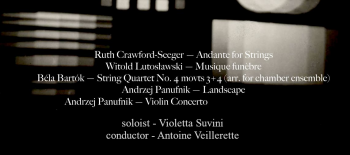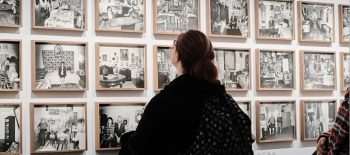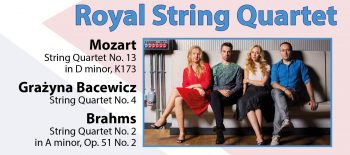Tuesday 11 March 2025, Ivor Crewe Seminar Room, Colchester Campus, University of Essex
Event time: 2 – 4pm
This year marks the centenary of the death of writer and poet Sophie Gaudier-Brzeska (1872-1925), of Polish origin, who came to London in 1911 with her partner, modernist sculptor Henri Gaudier-Brzeska. They formed an artistic alliance, dedicating their lives to fulfilling their creative visions.
Gaudier-Brzeska’s work spans various literary forms – from novels and poems to diaries and short stories. It is multilingual; she wrote with equal intensity in English, French, and her native Polish. Her works are part of special collections at the University of Essex, Cambridge University, Kettle’s Yard, and the Musée des Beaux-Arts d’Orléans in France.
The University of Essex holds an extensive archive of her poetry notebooks and journals in the Special Collections of the Albert Sloman Library. The commemorative afternoon will feature presentations by Dr. Patricia Gillies on Sophie’s construction of an artistic self in Europe and England, despite the challenges of prejudice, poverty, and illness; by visual artist Ania Ready on Sophie’s final years in a mental asylum, analysing her literary life through the lens of self-fulfilling prophecy; and by Jan Borysiak, an MA student at UCL, on how Sophie’s life and work resonate with the experiences and expressions of Virginia Woolf.
Centre for Interdisciplinary Research in Literary Studies
University of Essex. Colchester Campus
Ivor Crewe Seminar Room
Location: https://findyourway.essex.ac.uk/search/60ef1a862031e800c2303de1?projectId=essexc
Hybrid event. Online link at: https://essex-university.zoom.us/j/99550998493
Organiser: Professor Katharine Cockin
More details on talks and speakers:
Sophie Gaudier-Brzeska’s Construction of an Artistic Self: Poetry Notebooks and Journal
By Dr Patricia Gilles
Born in 1872 Galicia to impoverished aristocracy living some 70 miles from Krakow in the Polish countryside of the then Austro-Hungarian Empire, Sophie Gaudier-Brzeska died in Coney Hill Asylum, Gloucestershire UK in 1925. Determined to achieve selfhood as an unconventional literary artist, she left hundreds of pages of journal writings in French, many loose pages in Polish and English, and fourteen small notebooks: all evoking her sufferings, rage and resistance. One of the few points of order is a series of notebooks filled with poems, three of which are marked by her in Roman numerals, I, II, III. The poems within are marked by crossings out and revisions, all indicative of artistic intentionality. Months, years and even days ascribed to poems evidently under constant revision make attempts at dating approximative. If the texts convey a chaotic and intensely painful life, it is one that is nonetheless vowed to artistic expression. Her concept of artistic selfhood is founded in a resistance to socio-economic and political structures. For Sophie, such structures block the connection of the self to the ideal, a world beyond the artificial where the truth of artistic work is informed by primordial forces. As these forces are fundamentally anarchic and transgressive, her expression tends to be disturbed and paradoxical rather than logical and ordered. When Sophie uses verse to denounce bourgeois venality and corruption – the meaninglessness of everyday life, the conventions of marriage and social politeness – she is asserting an artistic presence in the world in terms that reject that world.
Dr Patricia Gilles
BA Hons in History, Northwestern University; Ph.D. French Literature and Language
Currently Senior Lecturer in the Department of Literature Film and Theatre Studies at Essex University. www.essex.ac.uk/people/GILLI96604/Patricia-Gillies
Beneath the Jealous Moon:
Sophie Gaudier-Brzeska’s foreboding narratives and her final years in the asylum
by Ania Ready
This talk focuses on Sophie Gaudier-Brzeska’s final years in a mental asylum, analysing her literary life through the lens of self-fulfilling prophecy. Having previously visually interpreted the lives of Sophie’s heroines – often her alter egos – through photographs published in a photobook I Also Fight Windmills, Ania Ready is now looking to create a moving image piece that examines the writer’s final years. Her writings reveal a preoccupation with themes of confinement and the moon, highlighting a
deep-seated fear of ending up locked away. Despite the absence of new work during her time in the asylum, her earlier texts explore these motifs, creating a haunting narrative of entrapment and existential struggle. By examining the interplay between her obsessions and circumstances, Ania aims to understand how Sophie’s thoughts may have shaped her reality, revealing the connections between her artistic expression and lived experience.
Ania Ready is an artist whose practice combines photography, archival materials, and text to explore the human psyche, agency, resilience, and feminism. In 2023, she published her debut monograph, “I Also Fight Windmills”, a literary photobook. Her work has been exhibited in solo and group shows internationally including at Modern Art Oxford, Pitt Rivers Museum, and Gdynia Film Centre Gallery, as well as various photography festivals across Europe, Canada, and New Zealand. https://www.instagram.com/aniaready/
Reading Sophie Gaudier-Brzeska and Virginia Woolf comparatively
By Jan Borysiak
Inspired by my dissertation, this presentation will analyse the similarities and differences in Virginia Woolf’s and Gaudier-Brzeska texts, lives and experiences as female writers in the early 20th century. Focusing on ideas perpetuated in Woolf’s essay, a Room of One’s Own, this talk will aim to highlight the trials both women encountered, as well as shining a spotlight on the under-recognised work of Gaudier-Brzeska.
Jan Borysiak – Final Year BA Comparative Literature student at King’s College London.




